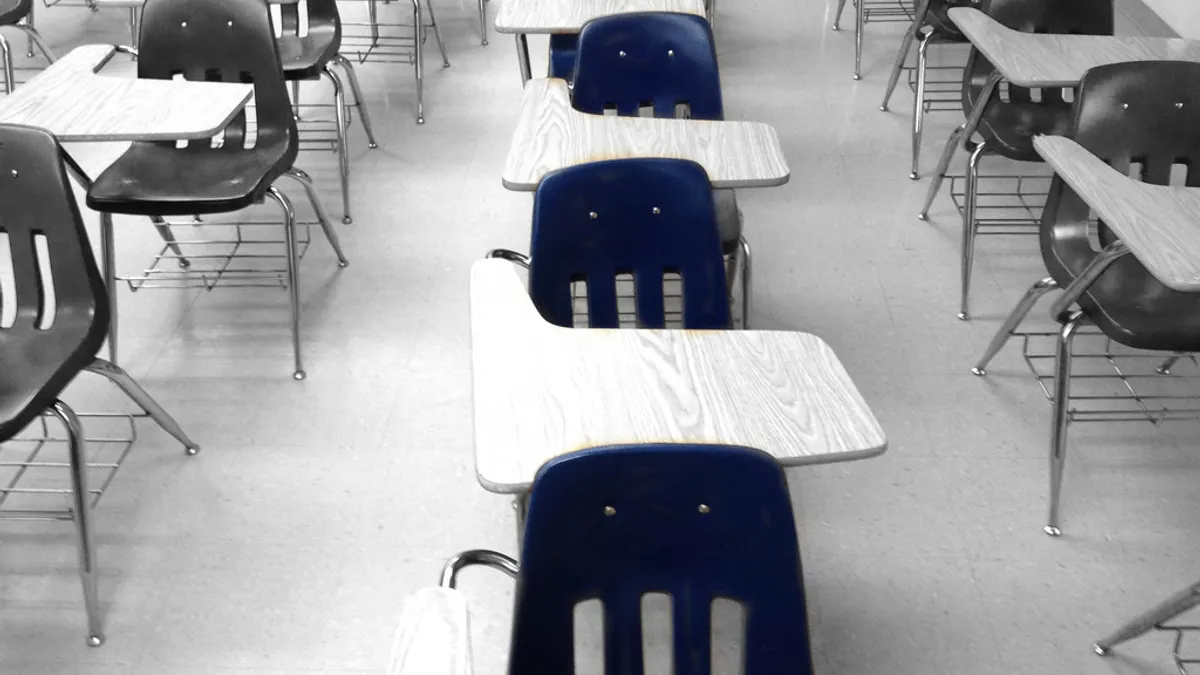Dive Brief:
-
An analysis of New York City Department of Education attendance data and more than 800,000 6th-12th graders' responses on a school climate survey shows only minimal decreases in absenteeism when students feel more positive about their schools, according to a new study published in the American Educational Research Journal.
-
Conducted by Daniel Hamlin, an assistant education professor at the University of Oklahoma, the study looked at the relationship between absenteeism (total and chronic) and four measures of school climate — school safety, relational environment, personal connectedness and academic engagement.
- “One possible reason for underwhelming results is that outcomes, such as student attendance, may be predominantly driven by factors that are beyond the control of schools,” Hamlin wrote, noting a combination of “home, school and neighborhood supports” might be necessary to achieve more significant improvements in attendance rates.
Dive Insight:
With students learning at home — and the prospect many will continue in similar arrangements this fall — district and school leaders are having to redefine what it means to attend school. In Indiana, for example, completing class assignments, answering a daily attendance question, attending a live video class or responding to personal communication, such as a text or email, are among the methods districts are using to track attendance.
If distance learning continues, the out-of-school factors Hamlin mentions will likely become even more important in whether students participate in online lessons and complete the assignments they would if they were in school. Hedy Chang, executive director of Attendance Works, a research and advocacy organization, has said education systems don’t yet have "good metrics" for measuring chronic absenteeism in a virtual learning environment.
While many online platforms time how long students are logged in, educators note learning also takes place offline. Some experts say project-based and competency-based learning should be a larger part of curriculum design in the future — especially for high school students.
“For many students — especially the most motivated ones — they’d be better off, not to mention happier, if they spent much more of their time reading, writing and completing projects than going through the motions in our industrial-style schools,” wrote Michael Petrilli, president of the conservative Thomas B. Fordham Institute, in a recent commentary








 Dive Awards
Dive Awards







